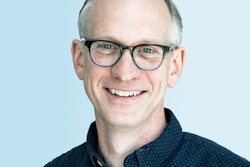In 1991, when Dr. Abdul Alim Muhammad, and Dr. Barbara Justice, learned that an immunologist in Kenya was achieving near-miraculous results treating HIV/AIDs patients with a substance called “kemron,” the two African-American physicians had to see for themselves.
After seeing the work of Dr. Davey Koech, director of the Kenya Medical Research Institute and a Harvard graduate, Muhammad (of the Abundant Life Clinic in Washington, D.C.) and Justice (of Harlem Hospital) returned to the United States eager to spread the news and begin using the substance on their patients.
Neither of them anticipated the arduous battle that was ahead. “The Kenyans had developed something quite good in the treatment of AIDS,” says Muhammad. “But we realized that people were not convinced by stories of what had occurred in an African country. The [Kenyan’s] excellent research had been largely ignored in the West.”
Muhammad and Justice began treating their own patients, believing that if the test results were published in the United States, they couldn’t be ignored. By 1992, the doctors had treated fifty patients, 82 percent of whom had showed improvement. That summer, they made a presentation at the American Medical Association meeting. Gradually, things began to change.
This past spring, after a five-year struggle, clinical trials with low-dose alpha interferon (LDOAI) therapy finally began in this country. And three historically Black medical institutions (HBMIs) –Howard University Medical Center, Meharry Medical College, and King/Drew Medical Center –are among the sixteen participating sites.
“This is the first time that a major medical breakthrough in Africa was brought to these shores,” states Muhammad. The trials are being funded by the National Institute of Allergy and Infectious Diseases (NIAID), a division of the National Institutes of Health. The multi-center study will evaluate the effectiveness of LDOAI therapy in reducing the symptoms of AIDS. Dr. Jones Jumi, of the Mercy Specialty Center in Detroit, Michigan, is the study chair. Dr. Wayne Greaves, of Howard, is the project’s co-chair. The study will include 560 subjects who already have the HIV virus.
A Natural Substance
Unlike AZT and other synthetic drugs that have been used to treat the symptoms of HIV/ AIDS, alpha interferon is a natural substance produced by the human immune system to combat infections. The nationwide study compares three preparations of LDOAI–Alferon LDO, Veldona, and Ferrimune. The form being used in Muhammad’s clinic is administered orally or nasally.p “The receptors for [alpha interferon] are in the back of the throat,” Muhammad explains. “We have a liquid alpha interferon that gets filled into the nose, then it drips down into the throat…. You try to get as much of it in the back of the throat as possible.”
Because alpha interferon is a natural substance which originated in Africa, it has gained acceptance among the African-American participants in the study, according to Dr. Mary Ann South, of Meharry Medical College. “For our population of African Americans, it will be important to know whether this drug works,” says South. Though not all of the study participants are Black, the three historically Black medical institutions were selected to participate in the study, in part, to ensure that the sample of the study population included people of color.
“Minorities and women haven’t participated in many [HIV/AIDS] clinical trials in the past,” adds South. “Now we’ve broken through that barrier and Congress has mandated that we get them involved in these studies.
“We’ve learned a lot about how to recruit Black people in these trials,” South says, before going on to explain the importance of hiring a recruiter who is culturally matched to the patient population. “Their first contact person is the important one to be matched. It also must be a caring, friendly, and concerned person. Then if the doctors aren’t matched, it doesn’t matter.”
The involvement of HBMIs in these studies also helps lend credibility to LDOAI therapy within Black communities, South says.
Having HBMIs conduct the HIV/AIDS clinical trials also provides an excellent opportunity for Black physicians and clinical researchers to be on the leading edge of new treatment and research. For example, one of Meharry’s microbiology graduate students is conducting experiments on blood samples taken from project subjects in an effort to understand what effect the alpha interferon has on blood. Since HIV/AIDS affects a disproportionately high percentage of African Americans and HBMIs treat a predominantly Black patient population, the knowledge gained in these trials is invaluable.
If the data collected in the clinical trials shows that LDOAI is an effective treatment, then the therapy will have to be considered as mainstream, Muhammad says. The three main advantages of LDOAI therapy are: cost, ease of administering treatment, and minimal side effects.
Cost and Side Effects
“It is not unheard of for an average AZT bill for a year to be $10,000. We are able to treat patients [with LDOAI] for about $800.” explains Muhammad. “Our prices now are artificially high because we have to have a special lab that formulates the preparation we’re using. Once in full-scale production’ it could be as cheap as aspirin.”
The low cost is particularly important when considering the treatment of poor populations in the U.S. and in Africa, for whom drugs like AZT are beyond affordability.
So far, the only side effect associated with LDOAI is an increase in appetite. “On average, we expect them to gain five to ten pounds in a six-month period,” Muhammad says of his patients. However, alpha interferon can be toxic at high doses. LDOAI therapy is not designed to be administered in the absence of other forms of treatment. Use of antibiotics, antiretroviral medications and other therapies often complement LDOAI treatment.
For some people, it is the difference between life and death. “For those who are sick, it means they have a better than 80-to-90 percent chance to make a clinical recovery,” Muhammad says. “It doesn’t change their HIV status, but it changes them from symptomatic to asymptomatic.”
South is hopeful that the trials will be successful for two reasons. First, because it will quell, once and for all, the cynicism expressed by the Western medical establishment toward a therapy that was developed in Africa. Also, she believes LDOAI has the potential to help African Americans come to terms with HIV/AIDS and its effect on the Black community.
“We need a better acceptance of this disease. It is here and we’ve got to face it. I believe that if we have a natural product, given in a natural way, that is acceptable to the culture we serve, it will help people who are not HIV positive to accept those who are.”
COPYRIGHT 1996 Cox, Matthews & Associates
© Copyright 2005 by DiverseEducation.com





















